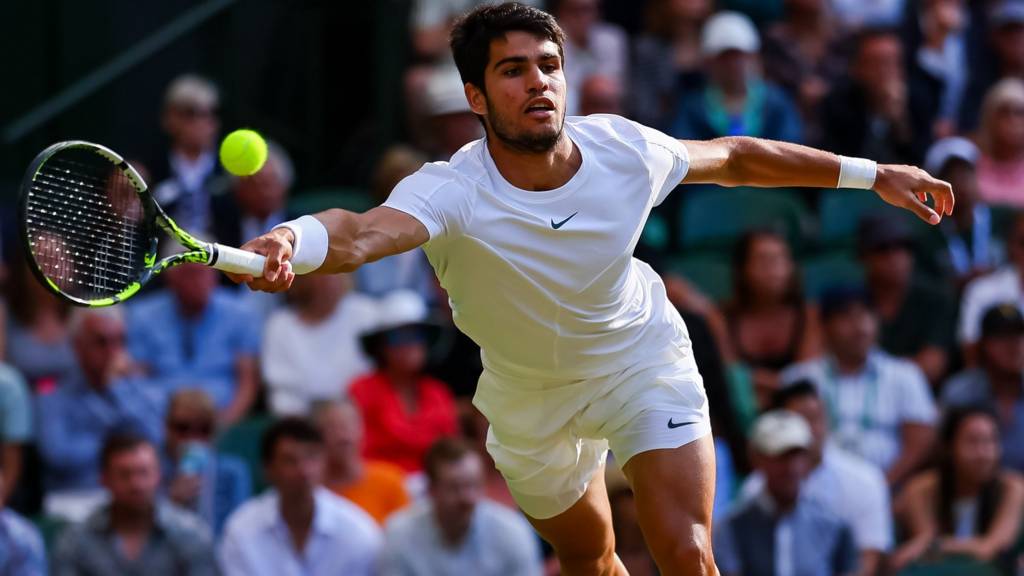In Carlos Alcaraz’s stunning 5-set win over Novak Djokovic to wrest the 2023 Wimbledon trophy, fans, journalists and analysts have pointed to different pivotal moments in the match as the reason for victory.
Zooming out and examining the stats broadly, one crucial area of the game stands out for Alcaraz. The 20-year-old phenom returned the Djokovic serve better than anyone has in 2023.
Djokovic Aces At Wimbledon
Djokovic had been owning his service games, until he ran into Alcaraz, who seemed to have a beat on 23-time Grand Slam champ’s every serving tendency. Heading into the Wimbledon final, Novak had been averaging 11 aces per match. Carlitos held him to just 2. Think about that. Two aces over the course of 5 sets.
Using the ATP’s “Return Leaderboard” metric, Alcaraz is currently the world’s best returner. However, some of his flashy return stats against Djokovic even outpaced his current tour averages. For example, in the championship match, Alcaraz posted a stat of 38% return points won on Novak’s first serve, according to IBM. His tour-leading average is 35%. Carlitos even bested himself– and he did it against the GOAT.
The question is, how did Alcaraz do it?
Alcaraz Return Strategy
In addition to the quick reflexes of youth, Alcaraz might have made use of analytics. ATP servers often have “go-to” tendencies when they need a point. For example, facing break point in the Ad court, a server might tend to hit a slice or kick serve to the returner’s backhand.
These tendencies can be understood by using data either available on the internet or through match-tagging and aggregation by a sports analytics firm.
In addition, serve speeds and placements at this elite level require returners to make fraction-of-a-second educated guesses as to where the serve will land. Alcaraz is savant-like at reading those cues.
Alcaraz Father: Superfan
But here’s the obvious unaddressed issue: Might the reported incident involving Alcaraz’s father filming a Djokovic practice have aided in picking up on any of these service tendencies?
That would be a stretch. It might not have helped. And it’s not even clear Alcaraz was aware of the video his father took. But to think of it another way: It can’t have hurt.
Asked about the filming in a press conference earlier in the week, Alcaraz diffused the question brilliantly saying, “Probably, it is true. My father is a huge fan of tennis. He doesn’t only watch my matches. I think he gets into the club at 11 a.m. and gets out at 10 p.m., watching matches, watching practice from everyone.”
Someone like that is a great base of knowledge to have on your team.
To be clear, the senior Alcaraz broke no rules and had access to the court where Djokovic was training.
The world number one also reminded us that he has access to hundreds of hours of Djokovic video on multiple platforms if he needs it. That was a tip-off that Alcaraz is indeed using video to examine server tendencies.
And it’s working.
Given the success of Alcaraz and the controversy that this incident stirred, the result could be more filming of player practices– and perhaps in turn new rules about who can and cannot engage in that practice.
















